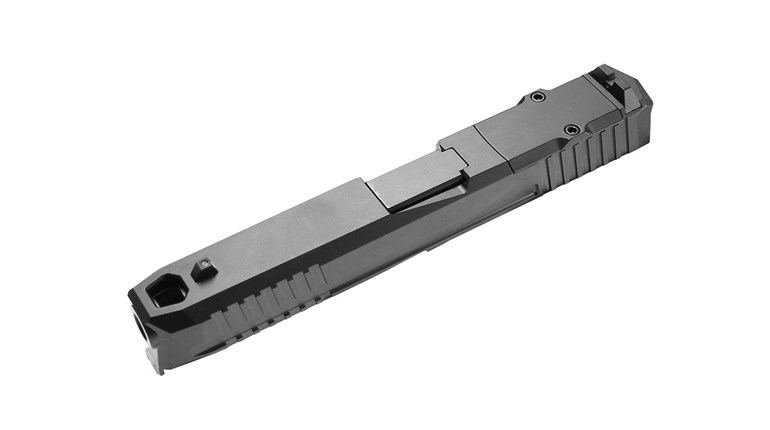
Smith & Wesson has been busily diversifying its product offerings over the last few years. This company's timeless double-action revolvers still hold a primary position in the catalog, including handgun-hunting models like the 629 chambered in .44 Magnum. However, folks will also find long-gun offerings as diverse as the M&P FPC folding 9mm carbine, the M&P 15-22 rimfire rifle and the dual-magazine-tube M&P 12 defensive pump-action shotgun.
For 2024, Smith & Wesson is taking its rifle lineup in a fresh direction by returning to the company's roots, namely, lever-action rifles. Dubbed the Model 1854, this brand new series' name is a nod to The Volcanic lever-actions patented in 1854. However, the 2024 carbines share little in common with the original Volcanics except for the use of a lever to manually cycle the action. This review takes a closer look at the standard stainless steel and polymer stocked model (#13812) chambered in .44 Mag.
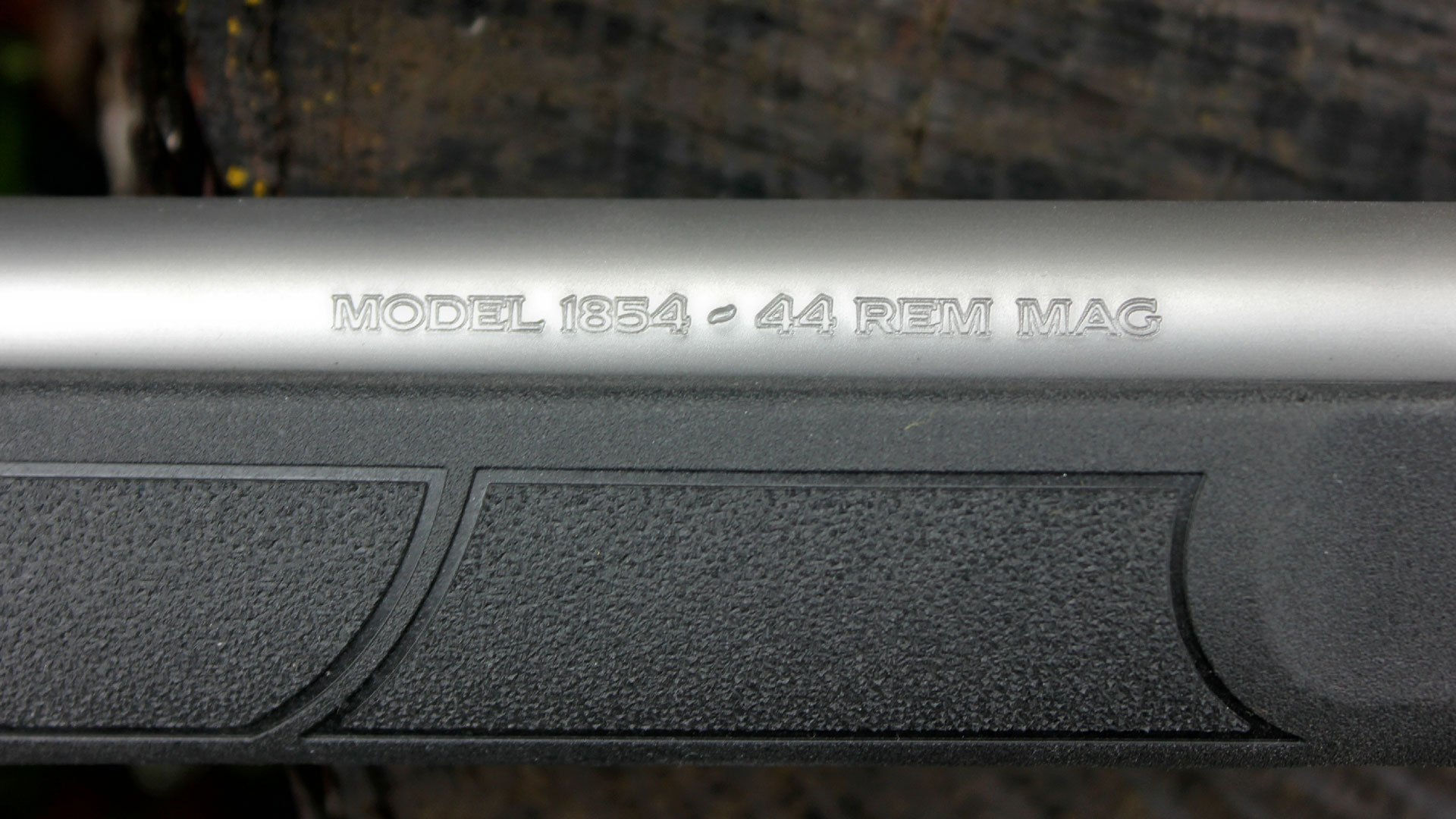
Simply stated, the Smith & Wesson Model 1854 is a side-gate-loading lever-action rifle. However, the company did a top-notch job of bringing this revolver-caliber carbine fully into the 21st century with popular features modern hunters and brush gun fans prefer. At the same time, this model succeeds in maintaining the classic looks, lines and handling characteristics many lever-action fans (like myself) prefer.
In recent years it’s become quite popular to weather-proof hunting guns with various hues of metal coatings and black toughening treatments. But Smith & Wesson opted for major components made from matte-finish stainless steel, a metal finish which has worked quite nicely for them since the launch of the Model 60 in 1965. The receiver is forged from 416 stainless steel while the 19.25-inch round-profile barrel is formed from 410 stainless. The fore-end cap and the magazine are also stainless, while the remaining external controls, features and receiver pins are matte black to complement the black polymer stocks. The result is a classy two-tone finish which stands out from the modern lever gun crowd.
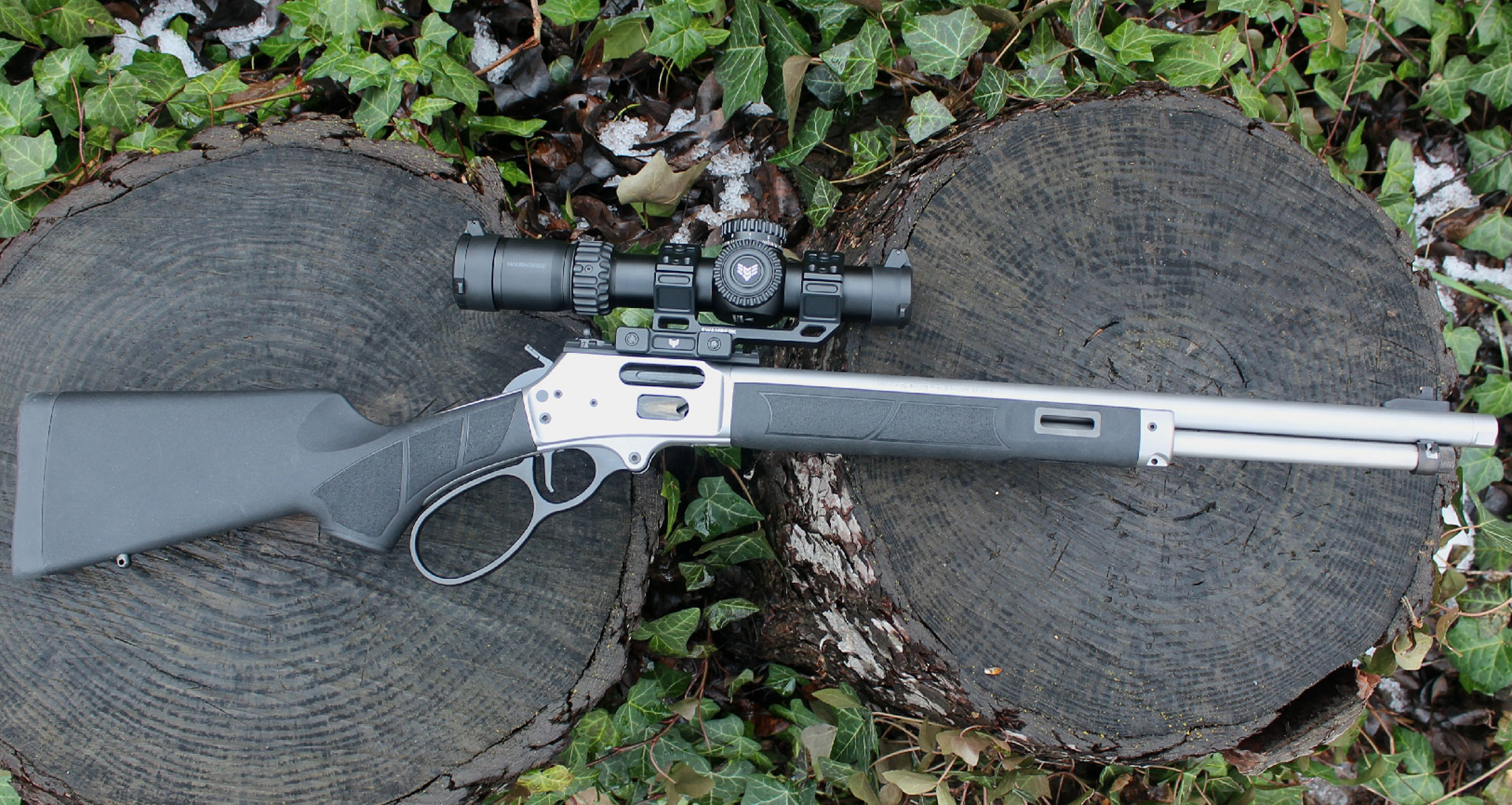
This rifle arrives with a set of XS Sights pre-installed at the factory. The system consists of a brass-beaded blade up front and a ghost-ring sight at the rear. The rear sight is set into the last two notches of a 4.75-inch long 11-slot Picatinny rail. The barrel sports 1:20” twist, eight-groove rifling and a muzzle threaded at 11/16-24 TPI to accommodate popular big-bore muzzle devices including compensators and sound suppressors. A thread protector is provided.
The Model 1854's nine-round magazine tube comes with a new twist, literally! Many side-gate-loading lever guns have fully fixed magazines. This requires the gun to be unloaded by cycling cartridges out through the action. Models which do not have loading gates feature twist-knob magazine liners which are extracted from the fixed magazine tube for loading and unloading. In recent years, Henry Repeating Arms has offered models with both a loading gate and twist-knob magazine liners.
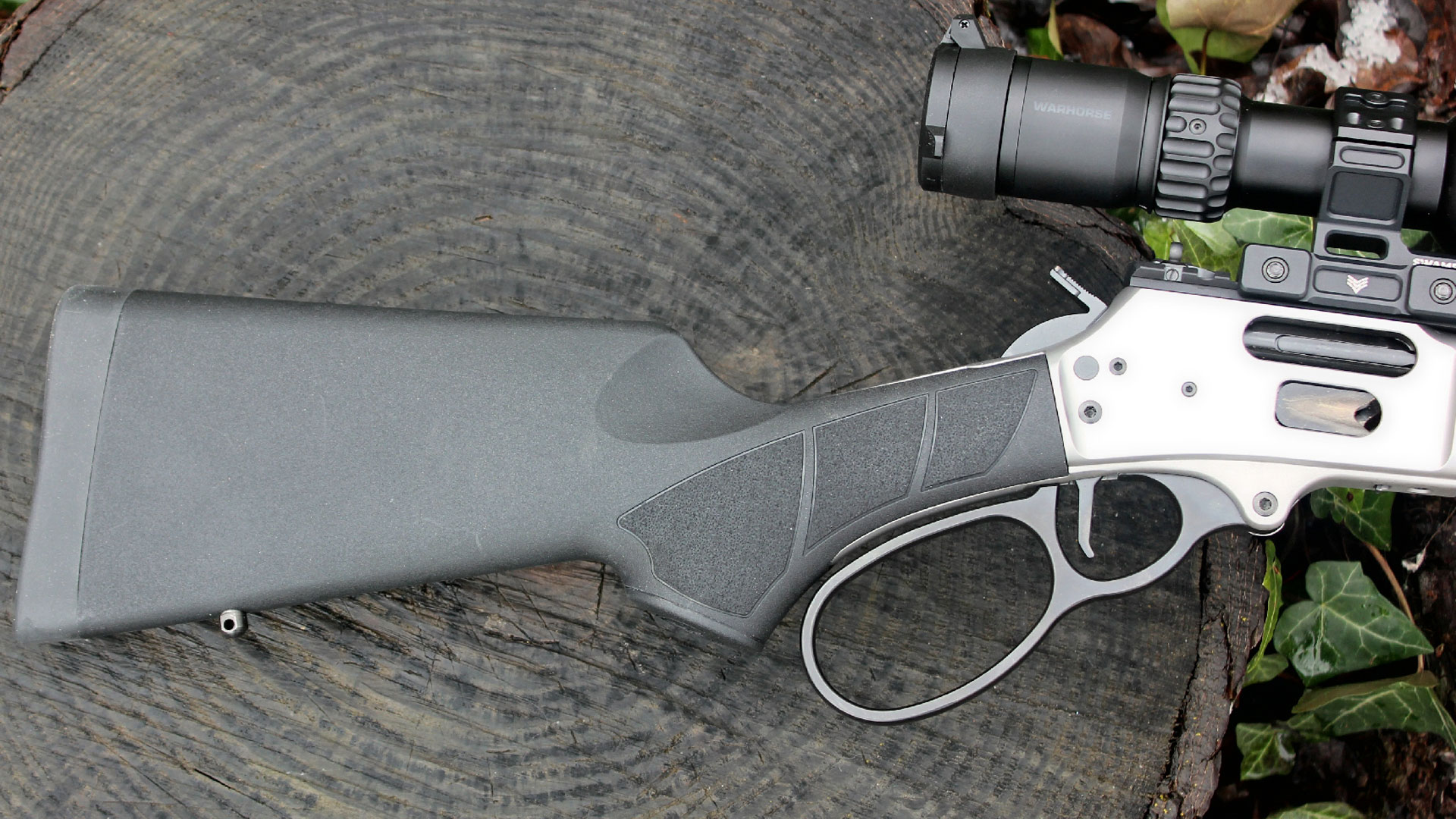
This stainless-steel carbine has a side loading gate and a twist knob at the top of the magazine tube. When the knob is twisted the entire magazine assembly slides out of the receiver including the exterior tube. As it slides out, any ammunition inside of the magazine is simply dumped out. So if you do choose to unload this way, make sure to hold the gun over a rifle case, tarp or similar catch to prevent the cartridges from falling in the dirt. Although this is an unconventional tubular magazine design it has one definite advantage. Should the tube get dented or damaged, the entire assembly can be swapped out for a new one, no gunsmithing required.
The polymer fore-end has a traditional rounded profile with panels of molded-in skateboard grip tape type texturing. This type of texturing provides plenty of purchase for cold, wet or gloved hands. The stainless steel cap features a flush-fit sling mounting port which pairs up with a sling swivel stud set into the shoulder stock. It needs to be flush so as to not interfere with one of the three forward M-LOK accessory slots. I'm a fan of this slot configuration because it preserves the rifle’s clean lines while allowing for useful upgrades including light modules and bipods.
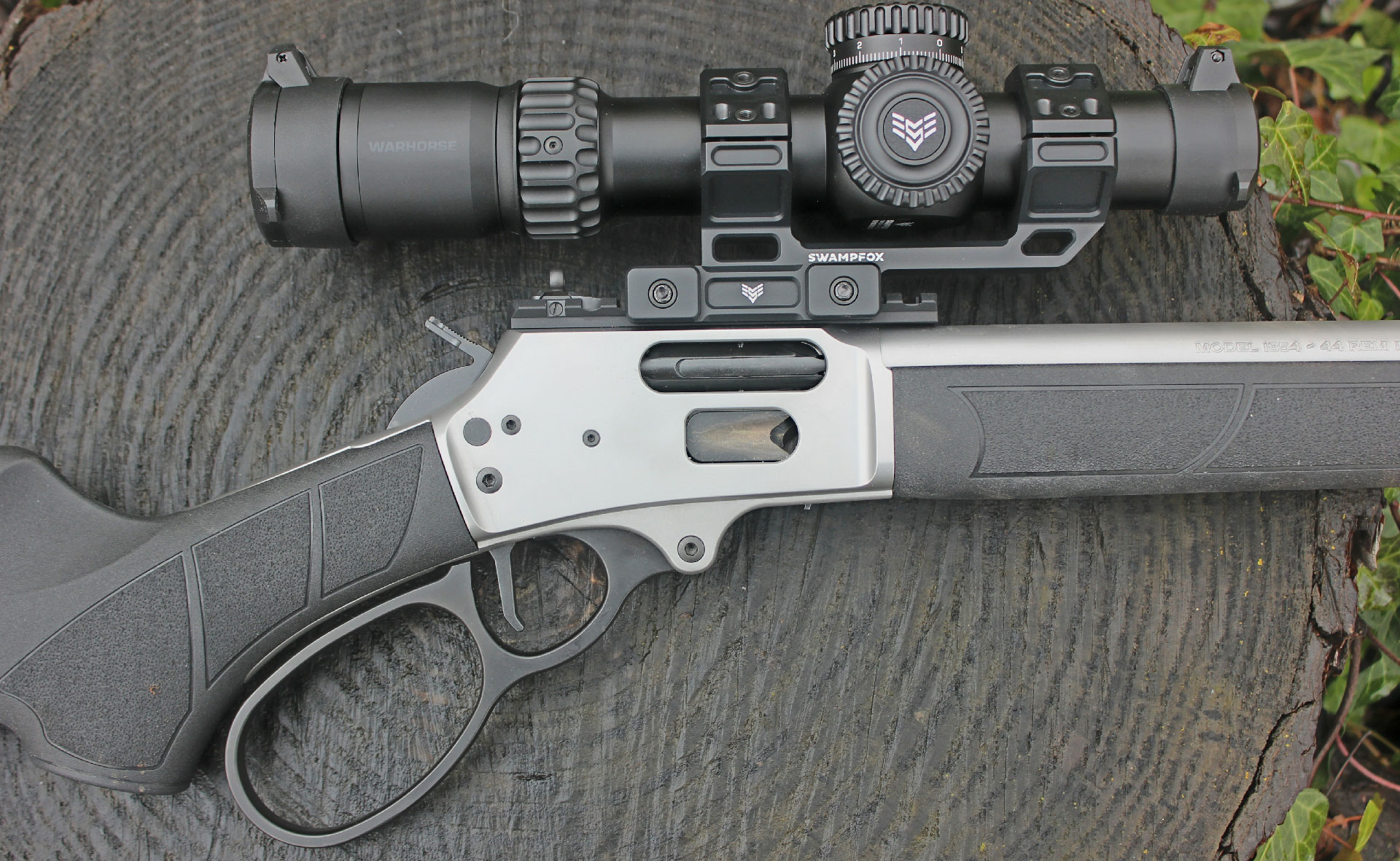
The receiver-mounted external controls include a spurred hammer, a push-button cross-bolt safety, a flat-faced trigger and a generously rounded lever loop suitable for use with gloves. The three-position hammer can rest fully forward; it can be set to a partially cocked position which prevents the action from cycling; and it can be fully cocked either manually or by cycling the bolt. When engaged, the cross-bolt safety blocks the hammer from striking the firing pin but the action can still be opened or closed. It’s important to note that this gun should not be dry fired with the safety engaged, as repeated hammer strikes will cause damage to the action.
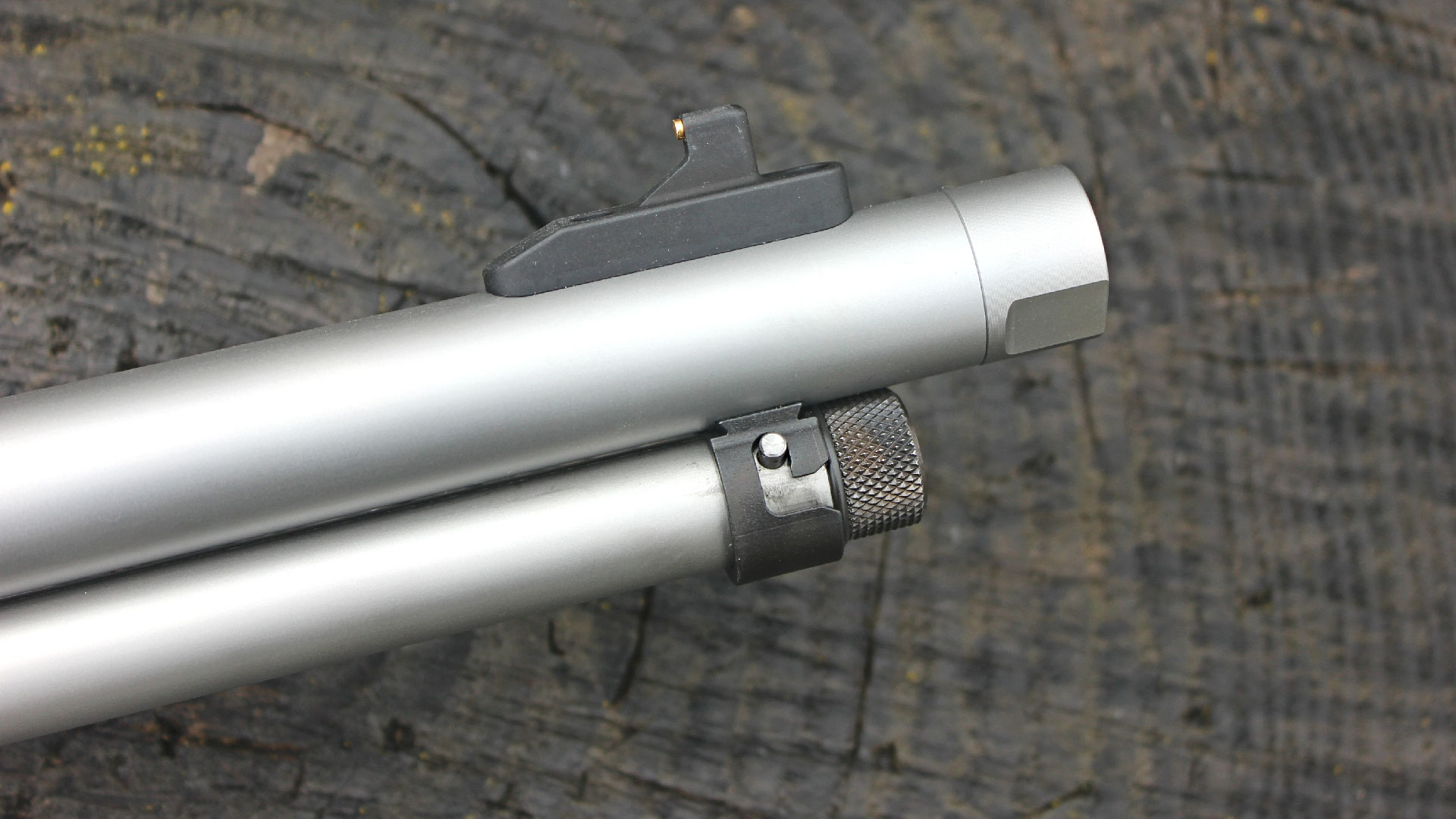
Flat-faced triggers, which got their start in competition circles, continue to gain traction in self defense and hunting circles. This is because the squared off edges of the face are easier to feel and aid in proper trigger-finger placement. The smooth trigger exhibited just a hint of take-up before breaking neatly with 3-pounds 14-ounces of trigger pull.
The curving grip of the black polymer shoulder stock features the same effective sandpaper texturing as the fore-end. It's capped off with a nearly one-inch-thick soft rubber recoil pad and provides a 13.25-inch length of pull. Tipping the scales at 6-pounds 12.6-ounces before adding any ammunition or an optic, the Model 1854 exhibits a well balanced and handy feel that allows it to swing easily when shooting from a standing position.
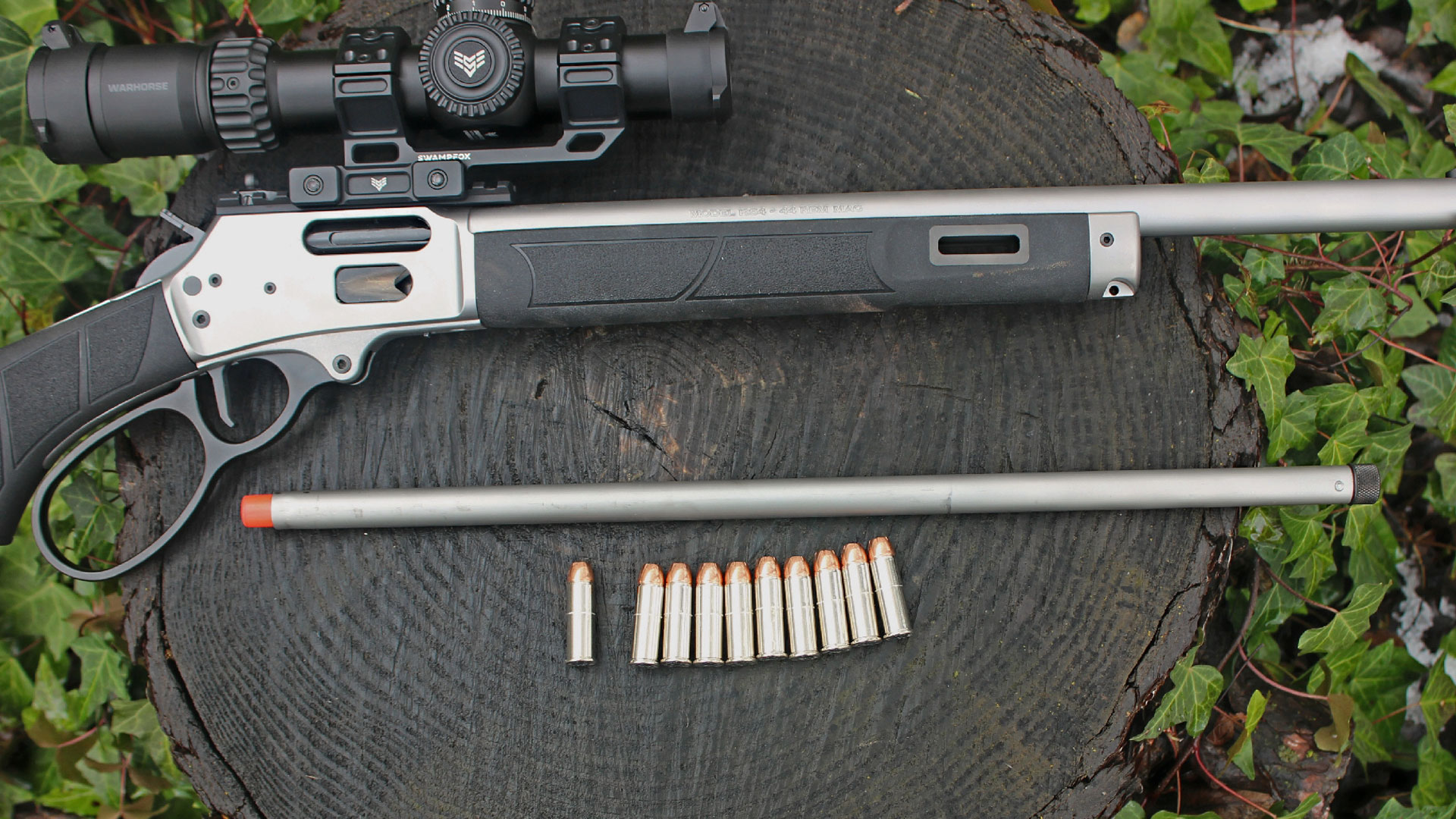
The relatively short optics rail is a welcome addition that is well suited for use with micro red-dot optics or cantilever scope mounts like the Hostile Engagement Mount from Swampfox Optics. The mount was used to support a Swamp Fox Warhorse 1-6 FFP LPVO scope (WAR16241-RL) which arrived around the same time as this rifle. The version of the Warhorse tested here features a green illuminated, first-focal plane Dragoon MIL glass-etch reticle with 1x to 6x magnification and 12-brightness settings. Although I planned to use this scope with an AR (and I still do) it was a great fit for this gun as well.
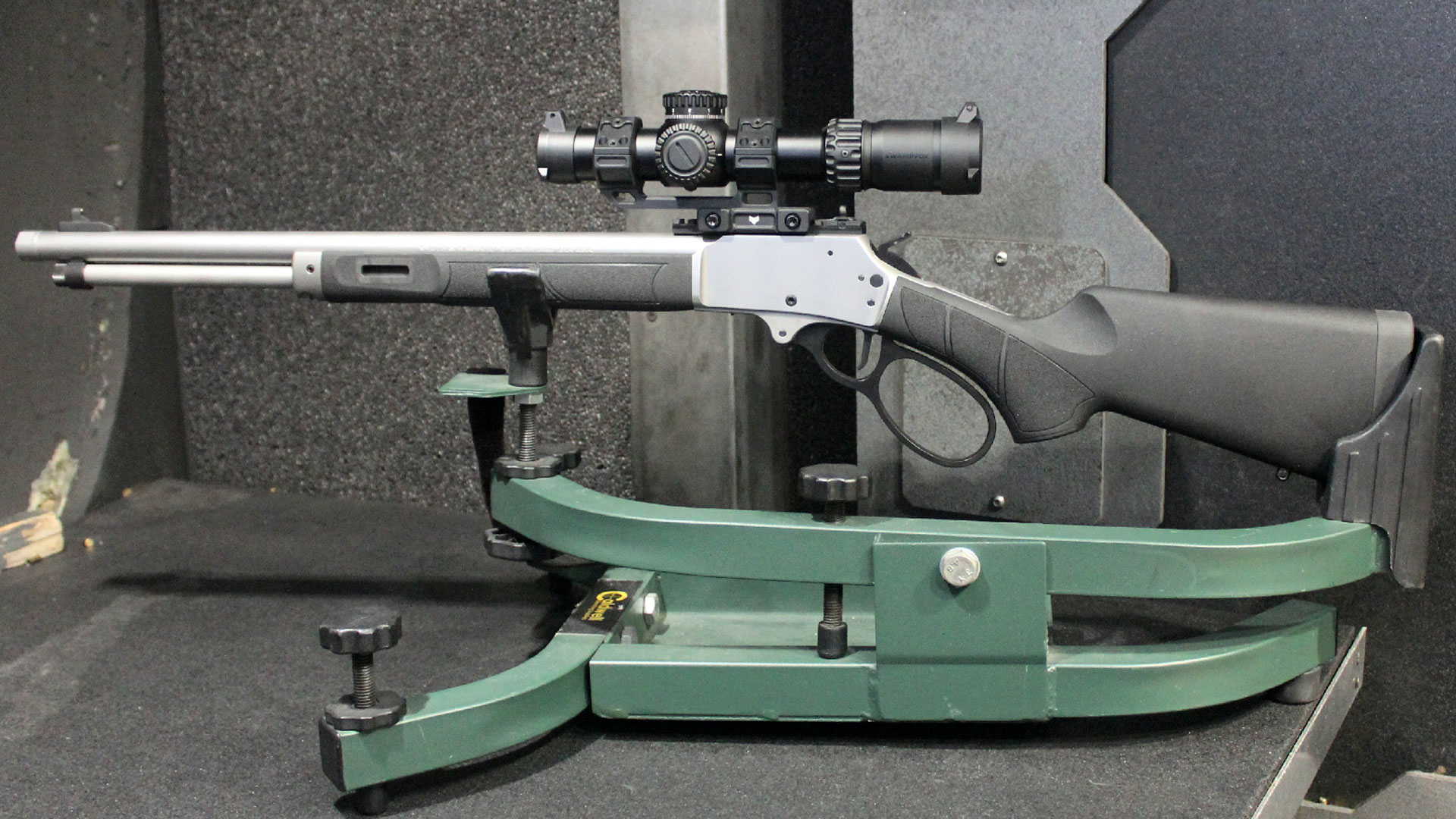
At the shooting range, the Model 1854 proved to be reliable with all ammunition tested. Although this gun can safely chamber and fire both .44 Mag. and .44 Special cartridges, I stuck with .44 Mag. hunting-grade loads. Bench-rested accuracy testing was conducted at 50-yards by firing three 3-shot groups per load tested. Bullet velocity was measured for ten consecutive shots using a Garmin Zero C1 Pro chronograph within a 5- to 15-inch offset from the muzzle.
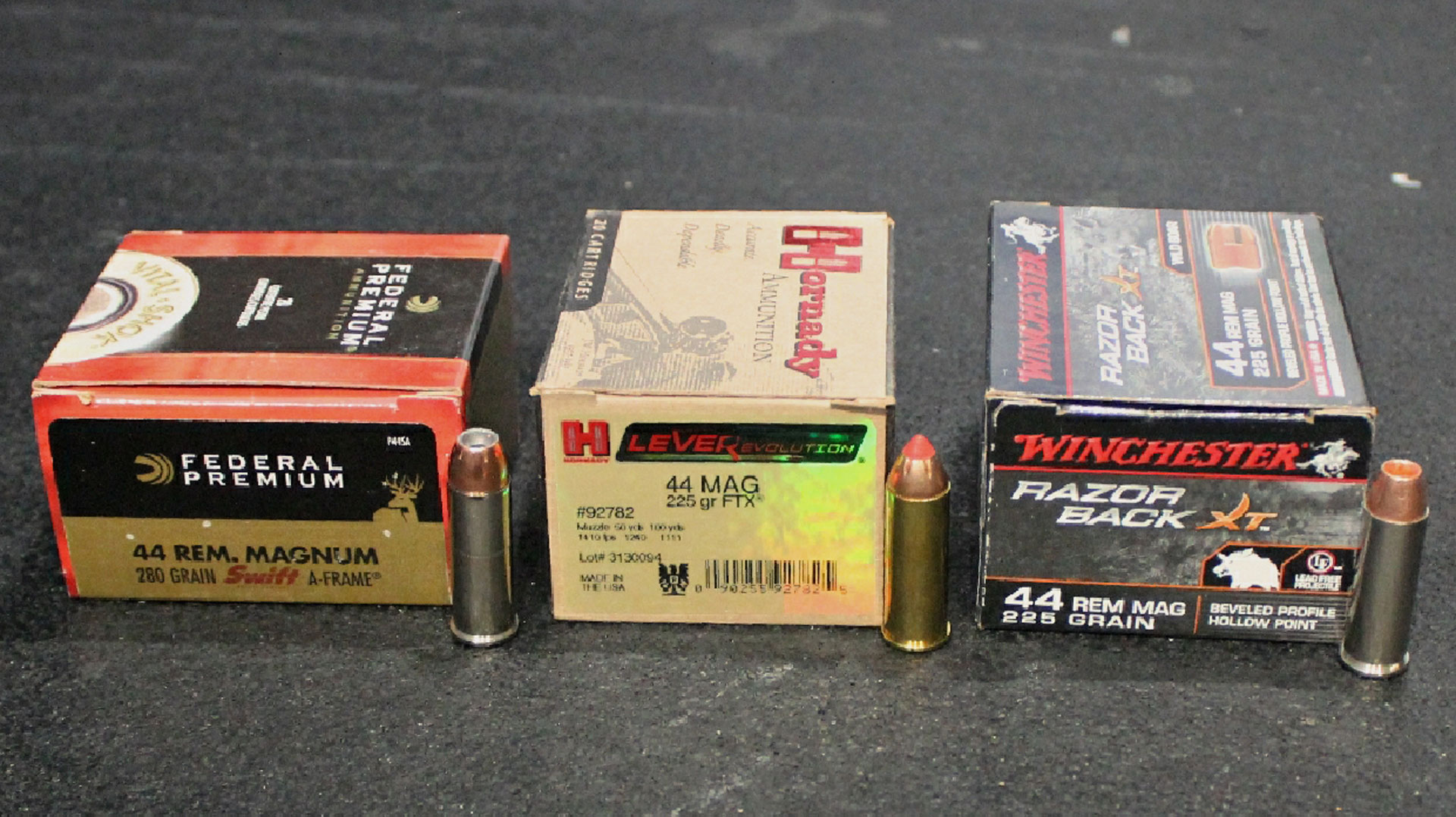
Winchester's Razorback XT load is topped off with a relatively light weight 225-grain all-copper hollow point bullet. It left the barrel at an average of 1586-fps for 1257-ft.-lbs. of muzzle energy. This load printed a best group of 1.27-inches with a group average of 1.33-inches. Hornady's LEVERevolution 225-grain FTX's polymer-tipped bullet zipped right along at 1893-fps for 1791-ft.-lbs. of muzzle energy with a best group of 1.27-inches and an average of 1.33-inches.
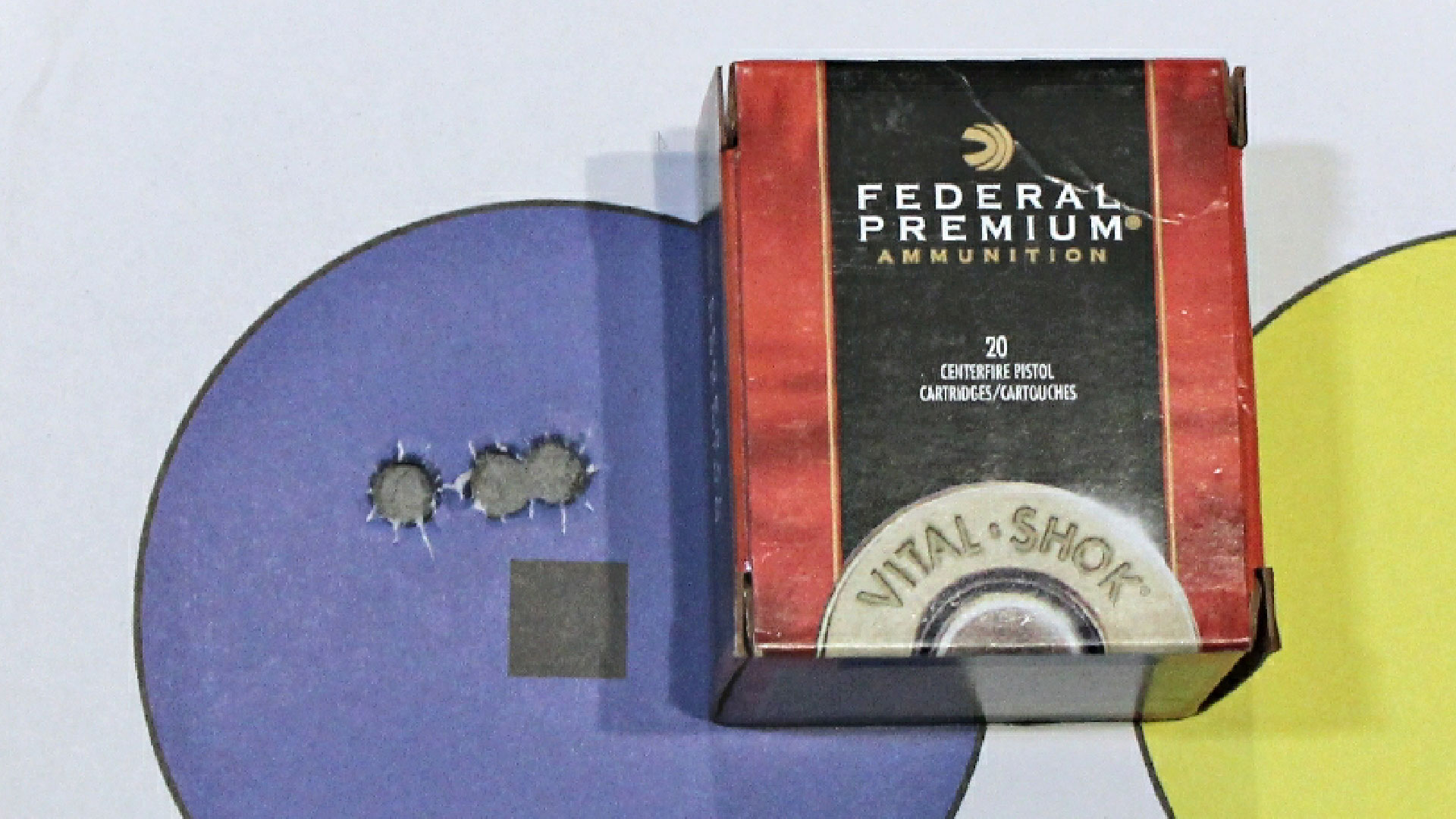
But in regards to accuracy, it appears that slower and heavier bullets just might win the race. Federal Premium's 280-grain Swift A-Frame jacketed hollow point was the slowest of the group with a velocity of 1347-fps for 1128-ft.-lbs. of energy. But it also tapped out the tightest group of the test, 0.75-inches, with an average of 0.87-inches.
Smith & Wesson's new Model 1854 .44 Mag. carbine has arrived on the market as a well-made, modern and ready-to-use lever-action. The fit and finish is clean and properly executed throughout and the action has the smooth, reliable operation of a gun that's been in production for many years. Considering its stainless steel construction and feature set, its suggested retail price of $1,279 is competitive with other quality lever guns in its class. But best of all, this revolver-caliber carbine is just plain fun to shoot! After this range test, I'm looking forward to seeing this lineup catch on and continue to expand with additional model and caliber options.
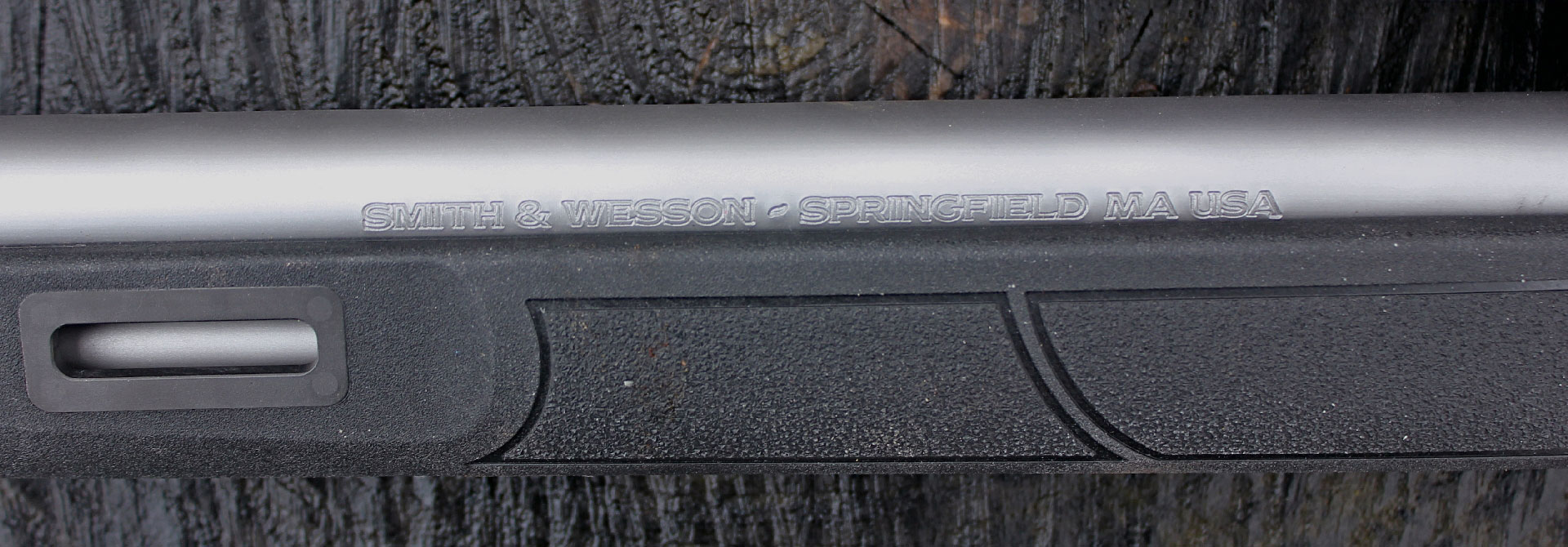
Technical Specifications
- Type: lever-action rifle
- Caliber: .44 Magnum/.44 Special
- Magazine: removable tube; nine-round capacity
- Barrel: 19.5 inches, eight-groove rifling, 1:28-inch RH twist
- Trigger: single stage; pull weight: 3-pounds 14-ounces (as tested)
- Sights: XS Sights brass bead blade front, ghost ring rear
- Safety: cross bolt button, partial cock hammer
- Stocks: textured black polymer; soft rubber recoil pad; LOP 13.25 inches
- Metal Finish: matte stainless steel; matte-black appointments
- Overall Length: 36 inches
- Weight: 6 pounds 12.6 ounces unloaded
- Accessories: lock, owner's manual
- MSRP: $1279 (Model 13812); smith-wesson.com












